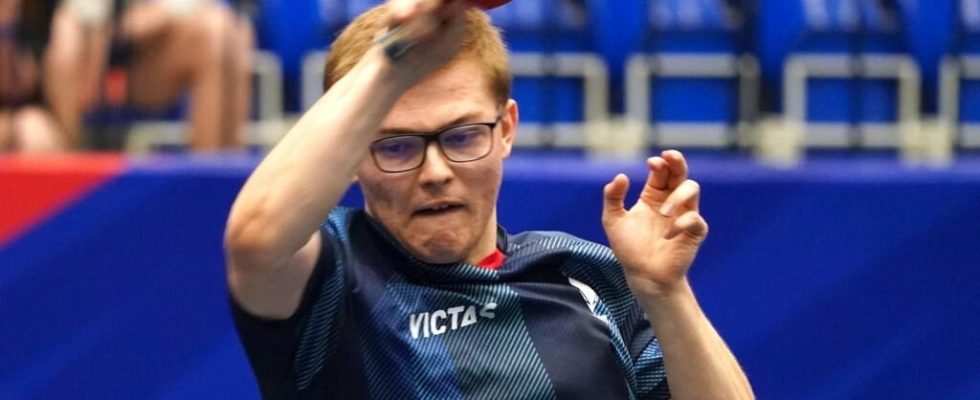Table tennis videos are widely shared on social networks and since the recent successes of the Lebrun brothers, an entire discipline in France is benefiting from unprecedented exposure. The Federation (FFTT) has well understood the issues behind these extremely popular and exciting clips.
3 mins
Social networks give pride of place to short videos, vertical format and dynamic content? “ This is exactly the definition of a table tennis rally », smiles Valentin Rose, communications manager at the FFTT. The time for a good exchange of ping-pong ticks all the boxes of the viral video. »
Virality, here, is the rapid and unpredictable diffusion of content. It still has to be provoked. Valentin has been working at the FFTT for almost two years: “ There are six or seven of us on communications now. We collect the rushes, we have to watch all the matches and select the exchange that can be the most viral. Then choose the right hook with the right sentence, the tagline. »
“ These contents are often watched two or three times by a user ” as the ping-pong goes quickly and even more so if the exchange is impressive, ” so these are contents that quickly become naturally viral. » Last February, the FFTT opened a TikTok account and the reels are posted on Instagram, the same content for two channels.
If table tennis videos have become popular in France, it is also thanks to two young ambassadors in the discipline. “ There was enthusiasm with the success of the Lebrun brothers, we even broke the record for licensees last year. » These young athletes: Alexis Lebrun, 20 years old, and his brother Félix, 17 years old, continue to climb the steps of the podiums… to the point of representing a real chance of an Olympic medal this summer in Paris. At the moment, they are at the championships in Busan, and their various accounts broadcast their prowess and that of their team around the table.
The Lebrun brothers were still able to rely on a solid imagination anchored in the heads of the French. This sport has its cult scenes, like the unreal exchanges in the film Forrest Gump where the hero systematically returns the ping-pong ball (special effects helping) to become champion of his country and play a game in China in the middle of the Cold War, Nixon era.
Far from the cinema, Valentin recounts another media show from the 80s, that of “ Jacques Secutin, great champion in the 70s, who did a lot for the notoriety of the discipline by democratizing table tennis. In the 80s, there were no matches broadcast on television, so he did shows around table tennis. » Becoming in fact an international ambassador of this sport – with its very French humor –, like the Harlem Globetrotters for basketball.
But we must go further, evangelize and convert those who “ recognize the qualities of this sport », continues Valentin. “ For match broadcasts, there is the WTT, a bit like the ATP in tennis and there, they are in Busan in South Korea. They are very good, we can enjoy the broadcast of all the matches in replay. Our own content concerns the French championships. »
The price of this digital success was to verify a viral video purporting to represent a robot arrogantly returning the ball to its opponent, titled “ will humans beat robots? This is just the beginning… » only to discover that the robot was a set-up. “ It is true that the players in the federation train with articulated arms full of AI, a training robot », concedes Valentin, but the new stars of social networks are indeed the table tennis players.
